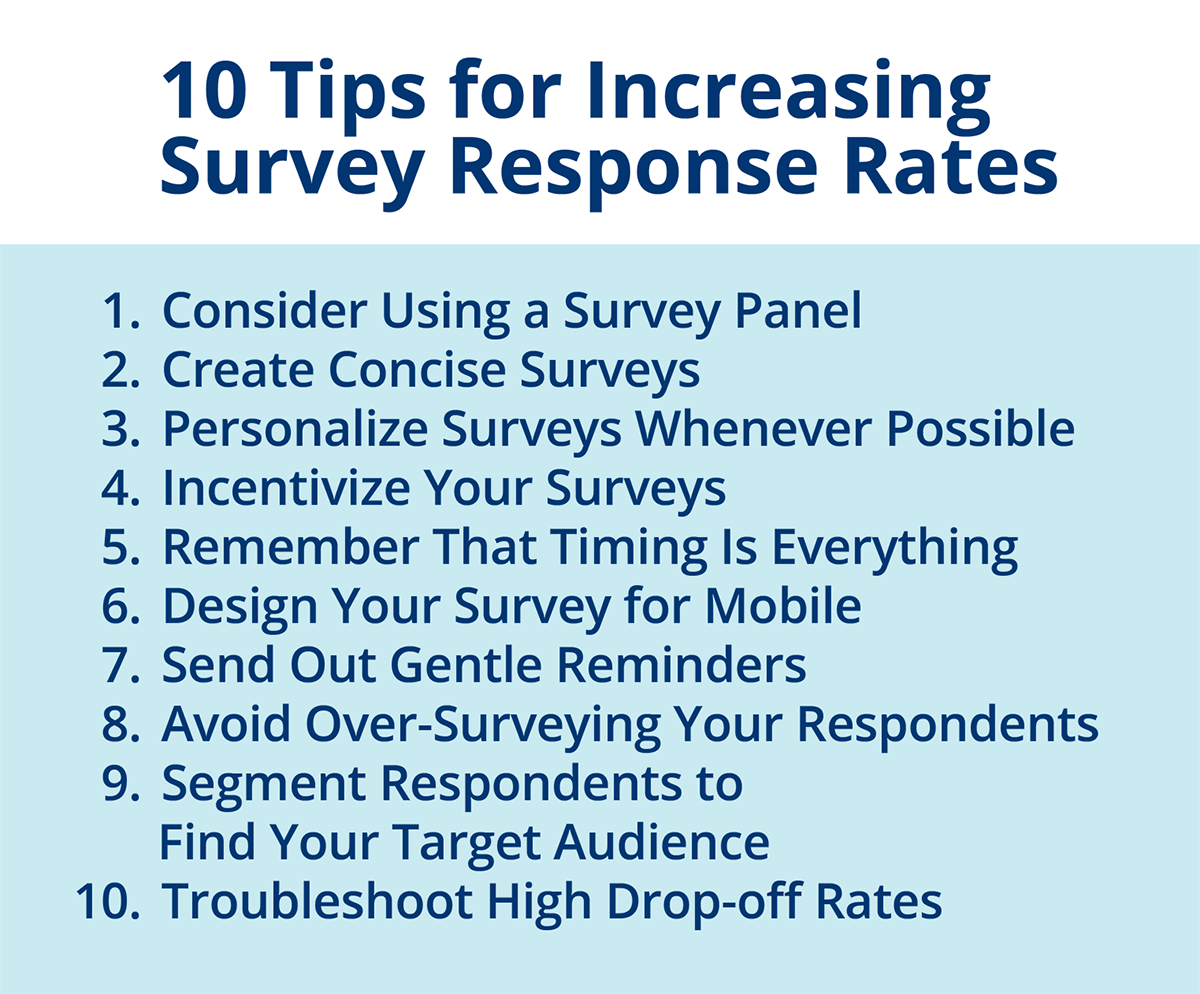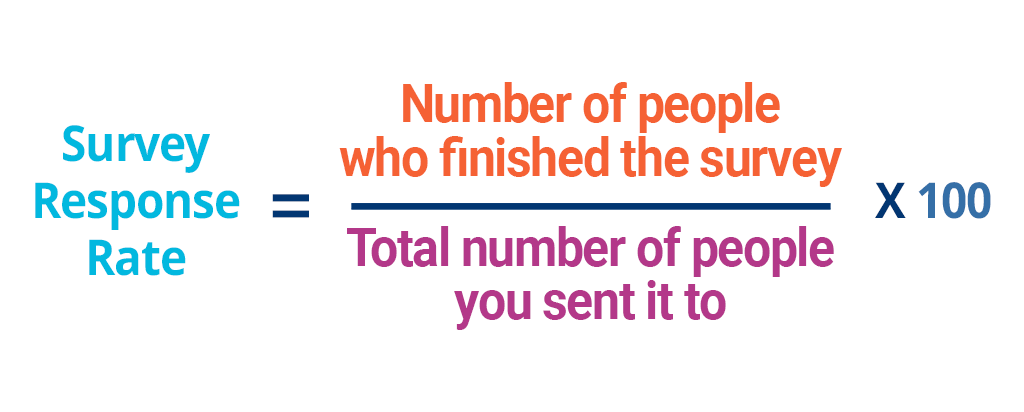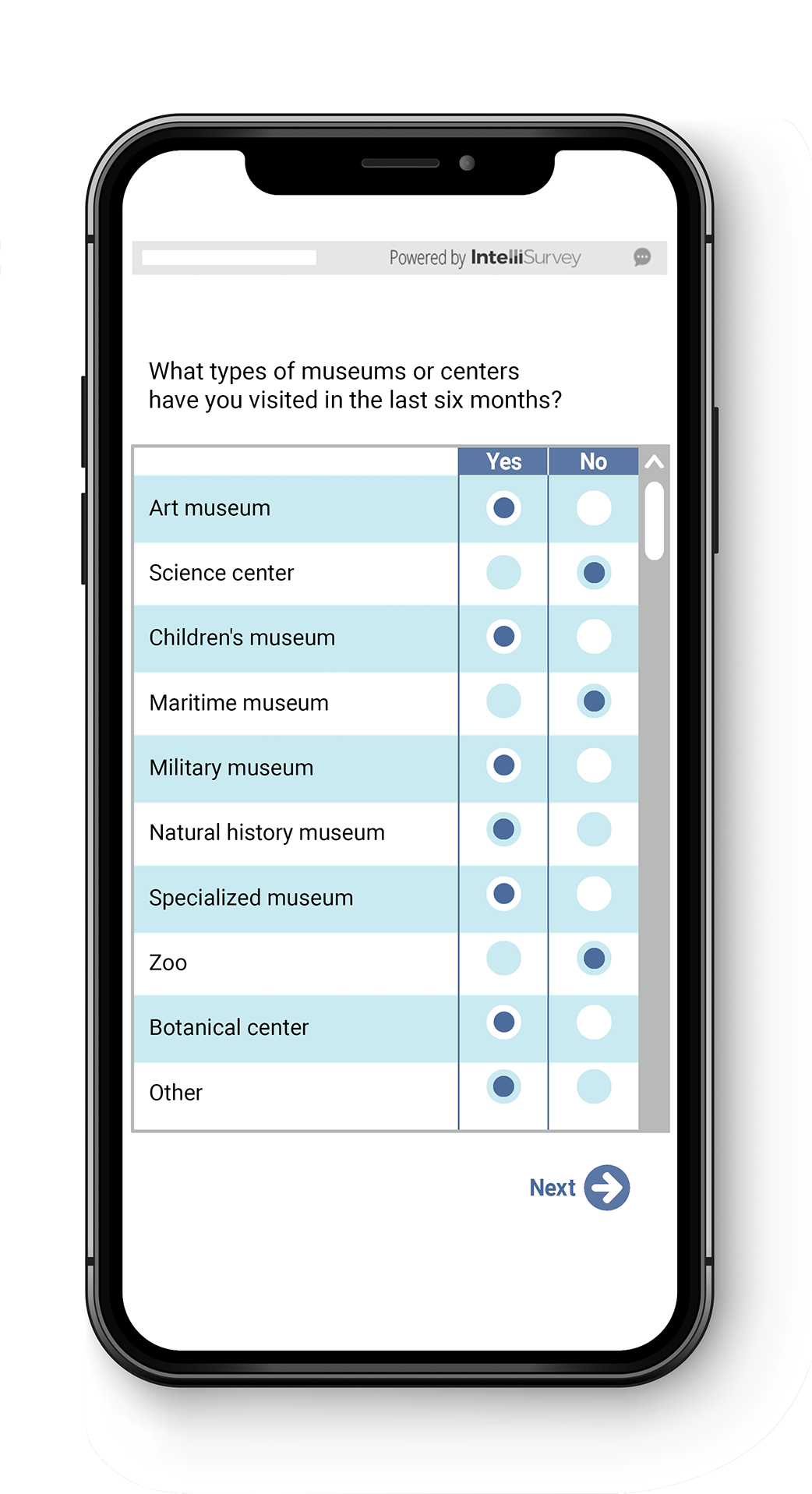It’s no secret that most of our screen time is spent on mobile phones and tablets. In fact, over...
Conducting surveys is a vital component of market research that helps businesses gather feedback from their audience. However, low survey response rates can pose a significant challenge, making it difficult to obtain valuable insights.
Low response rates limit the amount of data collected and can also lead to a biased sample. Fortunately, there are various strategies that businesses can adopt in order to increase survey response rates.
In this article, we will discuss some of the best strategies researchers can employ to improve their survey response rates and gather more valuable insights.

What Is the Survey Response Rate?
The survey response rate measures the percentage of people who complete a survey out of the total number of people contacted to participate. When conducting surveys, having a high response rate is critical because it indicates the level of engagement and interest of participants in the survey topic. If a survey response rate is higher, its results will be more accurate and representative of the population sample.
By tracking response rates, businesses can gain insights into the level of engagement and satisfaction of their customers or target audience. These insights can inform marketing decisions and improve products, services, or customer experiences.
Surveys with a low response or completion rate can help inform businesses that adjustments are needed. Low response rates often indicate that a survey is not capturing the target audience's attention or that the questions may not be relevant or clear enough. In these scenarios, researchers and businesses may need to adjust their survey design, distribution strategy, or survey questions to increase the response rate and improve the accuracy of the data.
How Do You Calculate the Survey Response Rate?
To calculate the survey response rate, you can use the following formula:
Response rate = (Number of people who finished the survey / Total number of people you sent it to) x 100
This formula will give you a percentage representing the proportion of people who responded to your survey out of the total number of people you sent it to. To calculate the response rate, you need to know the number of people who completed the survey and the total number of people invited to participate.

How Having a High Survey Response Rate Benefits Data Collection
A high survey response is critical to have because it can significantly benefit data collection, especially in cases where the number of nonresponses is uneven among survey respondents. A low response rate, on the other hand, can lead to several issues that can negatively impact the survey's validity and usefulness.
If your survey response rate is too low, it is unlikely to provide an accurate picture of what is happening among your target audience or sample. When the volume or quality of your survey responses is too low, it can be challenging to come to any helpful conclusions and make it even more difficult to put any follow-up strategies into action – rendering the survey useless.
10 Tips for Increasing Survey Response Rates
If you're struggling to get enough responses for your surveys, there are ten things you can do to help increase the response rates:
1. Consider Using a Survey Panel
A survey panel is a group of pre-selected respondents who regularly volunteer to answer surveys. Using a survey panel can be a helpful strategy to ensure you have quality respondents who are willing to answer surveys.
The survey panel approach can help researchers avoid hunting for new respondents for each survey, saving time and resources. Survey panels are a wise investment for companies that conduct many surveys or want to keep surveying the same groups for longitudinal studies.
2. Create Concise Surveys
When designing your survey, keep it brief to prevent survey fatigue. Be sure to use questions that require minimum interaction and open-ended questions sparingly. Use a progress bar to show how much is left to complete the survey. Seeing a dynamic progress bar makes people feel they are advancing and encourages them to complete the survey.
Whenever possible, use skip logic and branching to display questions based on the respondent's previous answers, so they only see questions relevant to them. Skip logic filters out irrelevant questions and automatically skips them to save the respondent time.
3. Personalize Surveys Whenever Possible
Personalizing your survey is a simple way to increase response rates. Customize the survey with information you already know about your respondents, such as their name or location, in order to add a warm, human dimension to your surveys. For example, a greeting can be a nice touch to start the survey on the right foot.
4. Incentize Your Surveys
Offering rewards or incentives can motivate people to take the time to complete your survey. However, it is important to choose the right type of incentive to maximize response rates. Small incentives for each respondent, such as a discount or coupon code, are often more effective than a larger incentive for only a handful of respondents.
When choosing an incentive, it is best to avoid raffles as they tend to yield a lower response rate. While larger incentives for completing a survey can produce higher response rates, they also tend to attract bad actors who are only interested in the reward. To avoid skewed results, it is important to carefully screen respondents and thoroughly clean your data by looking for cheaters.
5. Remember That Timing Is Everything
Timing is crucial in getting a high response rate for your surveys. The right time for sending out invitations depends on the type of survey you are conducting. For instance, customer satisfaction (CSAT) and customer effort (CES) surveys are best administered immediately after customers interact with your business. On the other hand, Net Promoter Score (NPS) surveys can be sent via email up to a month after a customer has completed a purchase.
When deciding on the timing, you should ask yourself whether you need feedback about a recent customer experience or if you want to give them more time to evaluate the product or service. It's important to note that the timing of the survey can significantly impact the quality and quantity of responses you receive.
6. Design Your Survey for Mobile
It is important to consider the communication channel used to deliver the survey to your audience is another crucial factor. Common channels include on-site/in-app surveys and email surveys.
Choosing the right method, and ensuring your survey design is optimized for that method, increases the likelihood that customers/respondents will participate. Optimizing your surveys for mobile devices can significantly increase participation rates.

7. Send Out Gentle Reminders
For many people, surveys are probably at the bottom of their to-do lists, making it a common practice to give potential participants and respondents a gentle nudge now and then. For example, you can set up an automated reminder email or text message to send within a specified number of days after the initial survey invite.
If you want to survey visitors on a website or in an app, use a pop-up survey every week or so until a customer decides to fill out the form or declines the invitation.
Additionally, you should make sure your survey invitations are coming from an email address people will recognize and associate with your brand, or they may think it is spam.
8. Avoid Over-Surveying Your Respondents
To gather meaningful insight from your audience, you should avoid over-surveying your respondents. While increasing the frequency of surveys can be beneficial, overwhelming your audience with too many surveys can discourage them from providing feedback.
One way to avoid over-surveying your audience is to collect feedback at specific touchpoints rather than bombarding them with surveys at every opportunity. It's important to show gratitude to your customers at each step and ensure that surveys trigger after a specified duration or event.
Another helpful tool is survey throttling, which prevents specific surveys from popping up again for the same customers or respondents.
9. Segment Respondents to Find Your Target Audience
If you find it difficult to get quality survey responses, you may be approaching the wrong audience. To ensure the most relevant feedback possible, you must thoroughly understand your target audience and tailor your surveys accordingly.
One way to accomplish this is by using targeting settings on web surveys that can reach specific customer segments based on their location, device type, or user behavior. This method typically involves displaying different surveys on different pages of your website or based on the channels people visit your website from.
Another factor to consider is email list segmentation. Before sending out an email survey about your product, you must segment your email list. For example, only those who have been on a customer journey with your product can provide valuable insights based on their experience. By segmenting your email list in this way, you can ensure that you're targeting the right customers and collecting feedback that is most useful for improving your product.
10. Troubleshoot High Drop-off Rates
If you're experiencing a high drop-off rate in your surveys, it's important to troubleshoot the issue in order to improve future response rates. One best practice is to test the study and look for any setup errors that may be causing respondents to drop out prematurely.
Another way to improve a high drop-off rate is to decrease the length of the interview. Longer studies tend to see higher drop-off rates, so shortening the survey can help encourage respondents to complete it.
It's also important to ensure that all embedded videos and links are working properly. Broken links or videos that don't load can frustrate respondents and cause them to drop out of the survey.
If you're seeing higher drop-off rates for mobile respondents, this could indicate that your survey is not truly mobile-optimized. It's important to ensure that your survey is fully functional and easy to use on mobile devices, as this can help improve the response rate for this group.
How IntelliSurvey Can Help
By following the strategies outlined above, businesses can improve their survey response rates and collect more valuable feedback from their audience. These strategies can help make the survey-taking experience more enjoyable for respondents and encourage them to provide honest and thoughtful feedback.
Remember that improving survey response rates requires a systematic approach, and it may take some experimentation to find the right mix of strategies that work for your business. Using these tips, you can increase the efficacy of your surveys and gain valuable insights.
IntelliSurvey has a variety of software and services that help companies create effective market studies and surveys that yield optimal response rates to uncover business insights. With help from IntelliSurvey, researchers are better able to deploy surveys and collect meaningful, accurate data.



